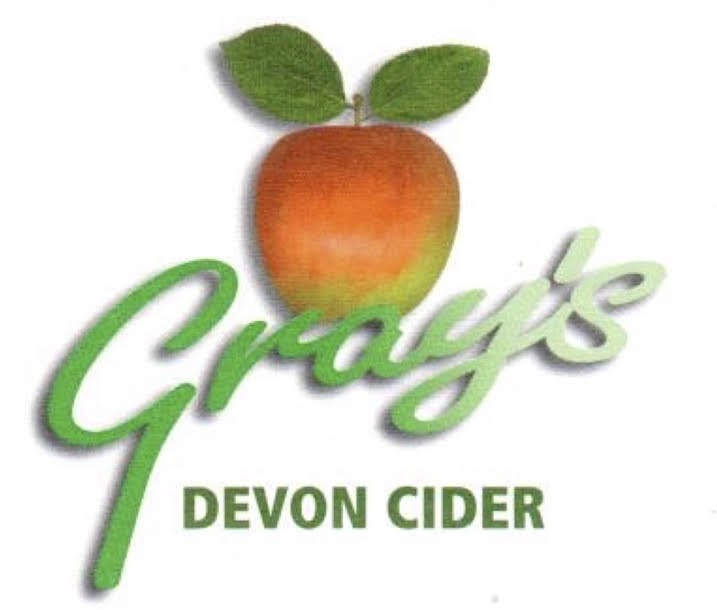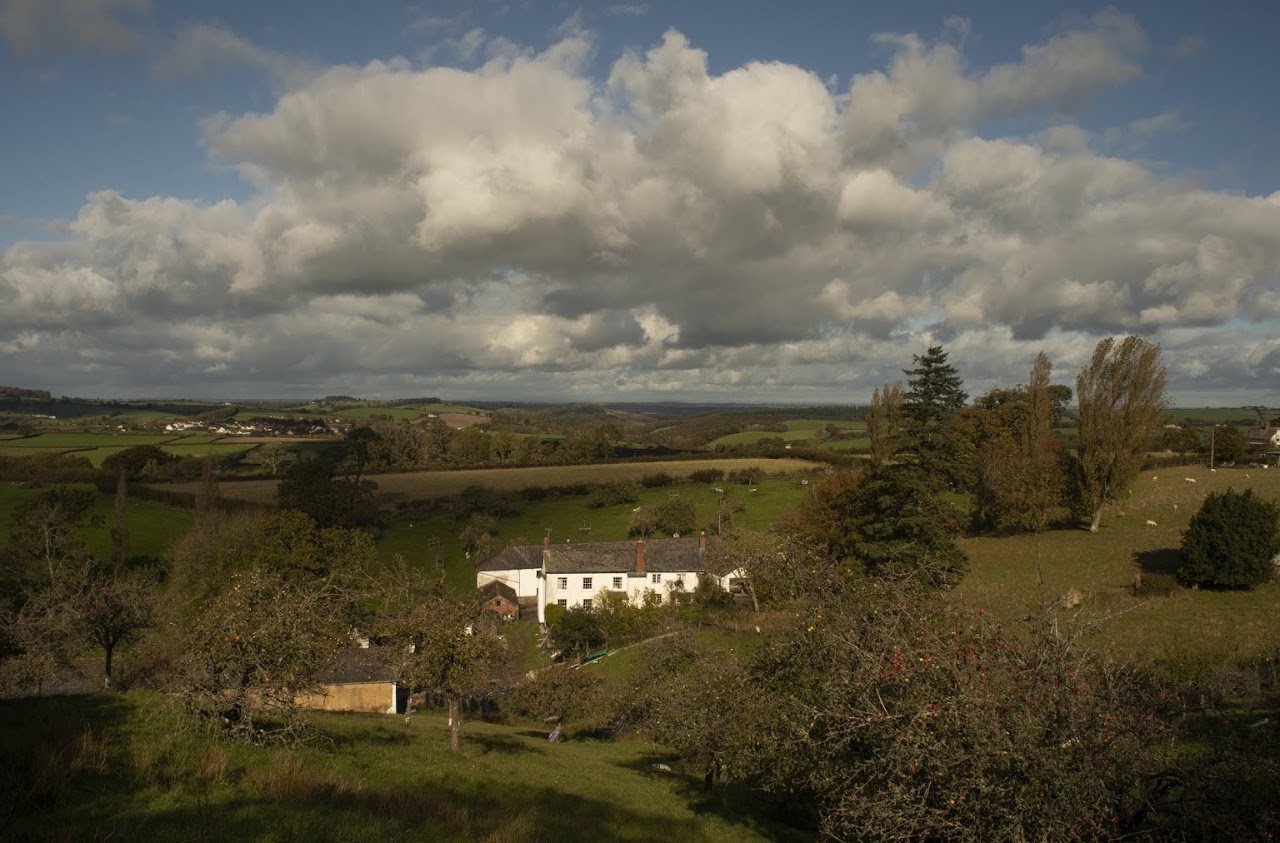 Halstow viewed from the Front Orchard, 2020.
Halstow viewed from the Front Orchard, 2020.
THE FARM
Halstow – “a holy place at the neck of a valley” – is set below a ridge that borders three Devon parishes. The farm has been in the Gray’s family since the late 18th century, with historical documents recording the planting of orchards in 1795. The cider-barn and pound-house date from the early 19th century, with remants of old cidermaking equipment still in evidence; the previous generation of cider-press, as well as apple-hopper – cut from granite and forming a pillar in the centre of the poundhouse – take pride of place. §
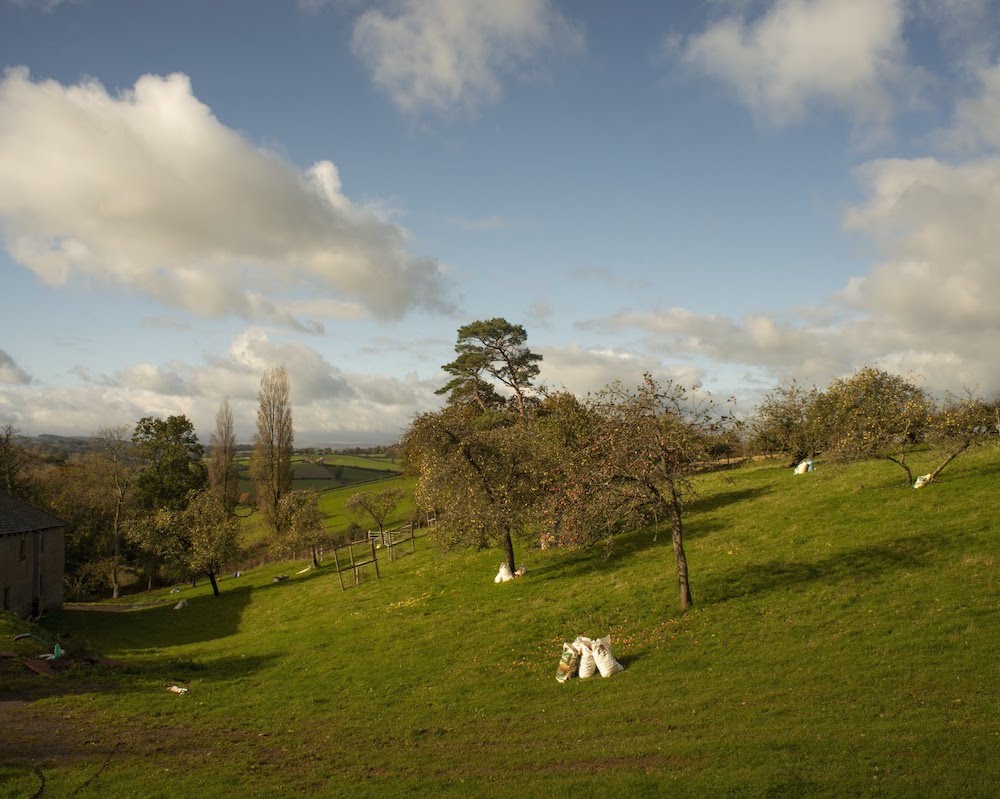 Back orchard during harvest, 2020
Back orchard during harvest, 2020
HALSTOW AS A VENUE
It’s no conincidence that this project takes place at Halstow. During the late 1970s and early 1980s, when I lived in a nearby village, the Grays were one of two local producers whose cider formed a staple of local diets. Farm workers, postal workers, as well as recent migrants from city to countryside, all recognized their cider as integral to the local culture and everyday life. Remants of orchards remained a prominent part of the landscape, as were local cider-drinkers, who carried glazed earthenware flagons to and from the ciderbarns with their daily supplies.
When developing this project, and having settled on cider as an example of live fermented food through which to experiment with human-microbial relationships, I returned to Devon and approached the Grays. The farm was, by then, run by Ben and Ruth, assisted by their sons. It now strands as the only cidermaker in the immediate vacinity, and one which has chosen neither to scaled-up to be an industrial concern, nor rebrand around its artisan credentials. Grays Devon Cider has been the home of this project throughout its development, and for all the artist and participants – human and microbial – that have taken part in the is project, throughout the years, and the seasons. §
- “Making cider has been a part of our family’s heritage since the 1600s. Gray’s Devon Cider is pure, still and traditionally made – real draught cider. We grow up to 50 varieties of apples, which, skillfully blended, make the delicious and distinctive flavour of Gray’s Devon Cider. These apples are grown over 8 orchards, right here on the farm, and include varieties such as Sweet Alford, Fair Made of Devon, Beef Apple, Pigs Nose, Dabinett and our very own – Halstow Natural. From tree to barrel, the process can take months. Apples are picked in mid October, then milled to release the juices, before pressing and fermenting. Natural yeasts are present in the apple skins, and the fermentation process begins organically.”
- The Grays
 Winter at the farm, 2020.
Winter at the farm, 2020.
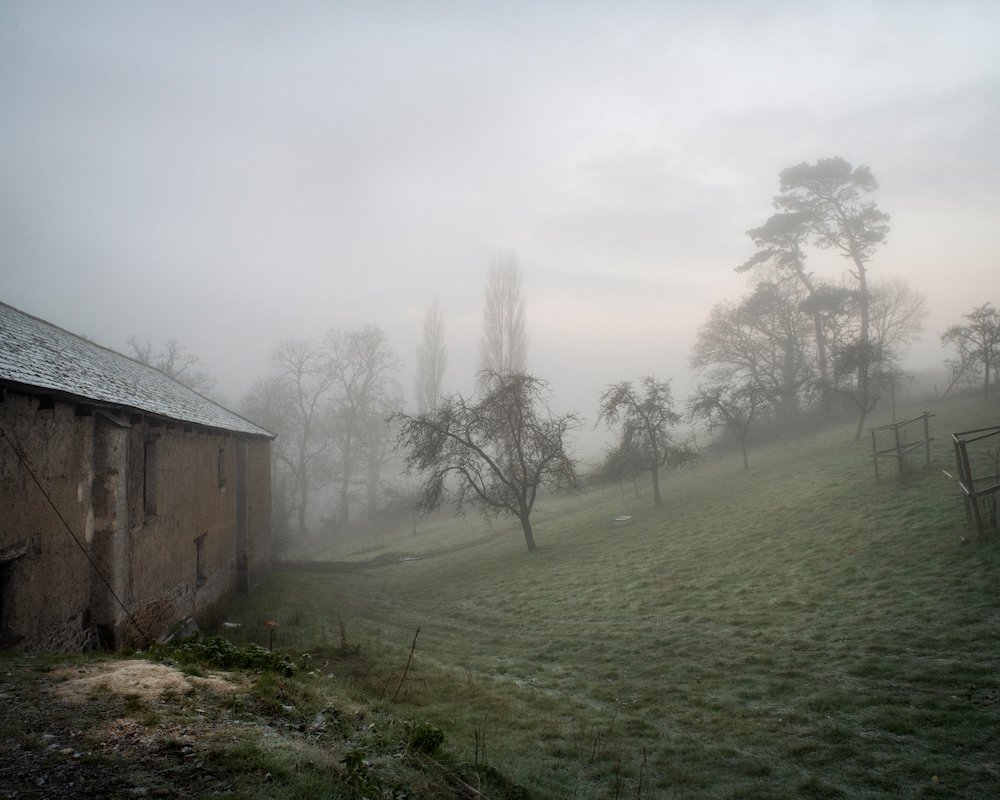 Back orchard in winter, 2020.
Back orchard in winter, 2020.
Inside the Poundhouse
The local term for the place where apples are crushed and pressed to make cider is poundhouse. At Halstow, this area contains the new belt-press, made in Austria, as well as the old wooden press and granite hopper (which once delivered apples into the scratter from the apple barn, on the storey above). During pressing, sacks of apples are brought in from the orchards and stored here. Once, a horse-driven scratter (crusher) occupied the central floor-space. Here, pumps used for transfering the newly=pressed apple juice into vats are stored.
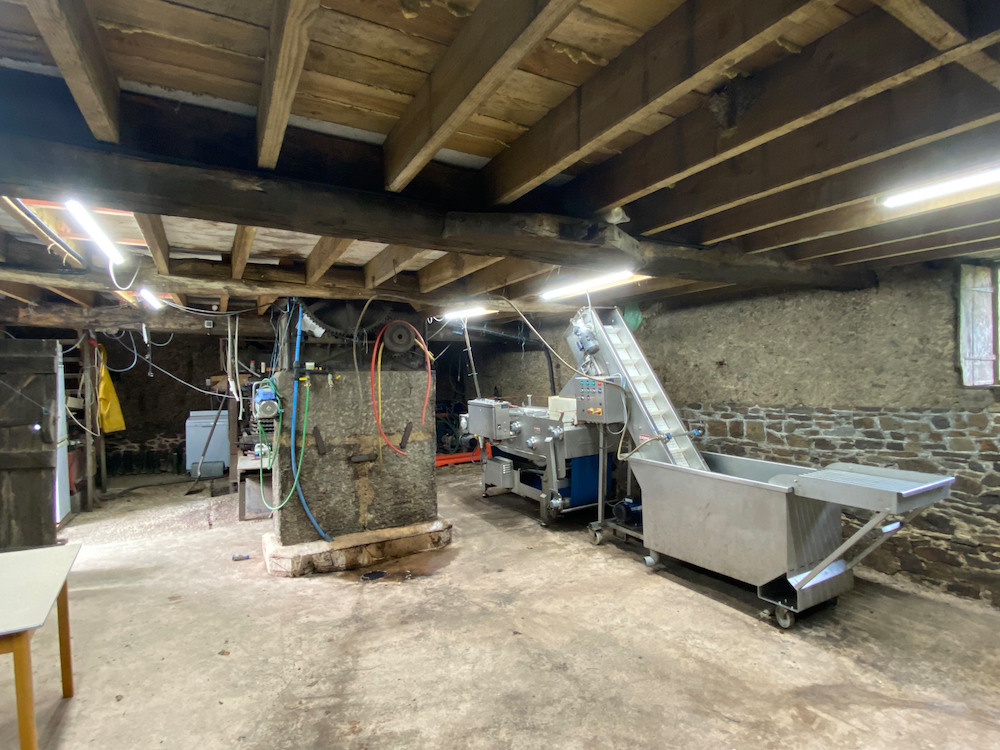 A view of the poundhouse, March 2021
A view of the poundhouse, March 2021
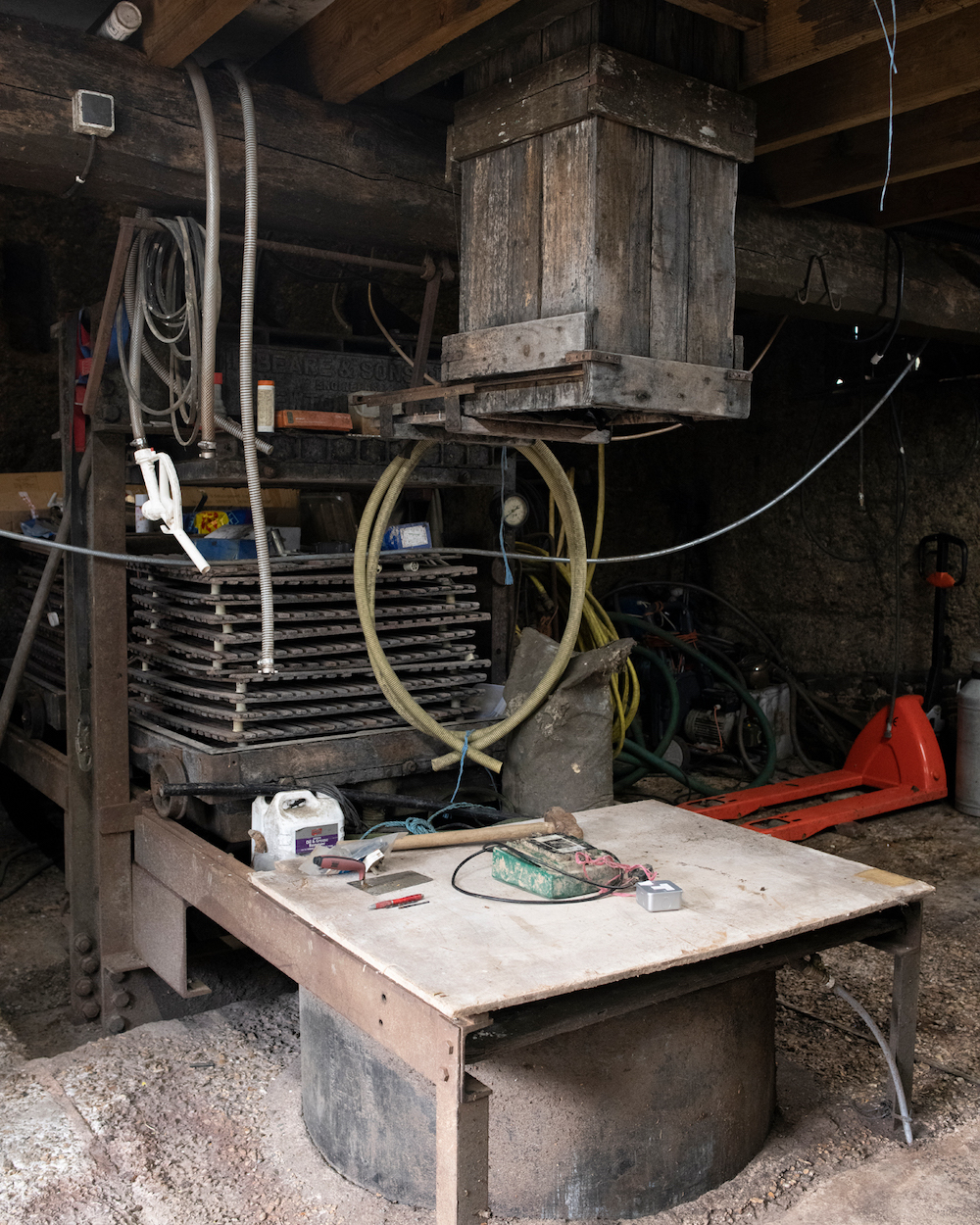 The old wooden press, and hopper above
The old wooden press, and hopper above
 The granite hopper, cut into a column
The granite hopper, cut into a column
 The belt press
The belt press
 Pumps and piping
Pumps and piping
The cider barn
The cider barn contains barrels of various sizes into which the cider is transfered for maturation and during blending. These barrels are largely made of oak, and have been previously used to store whiskey and other spirits. Cider decanted from these barrels, on demand, for distribution in bottles and flagons.
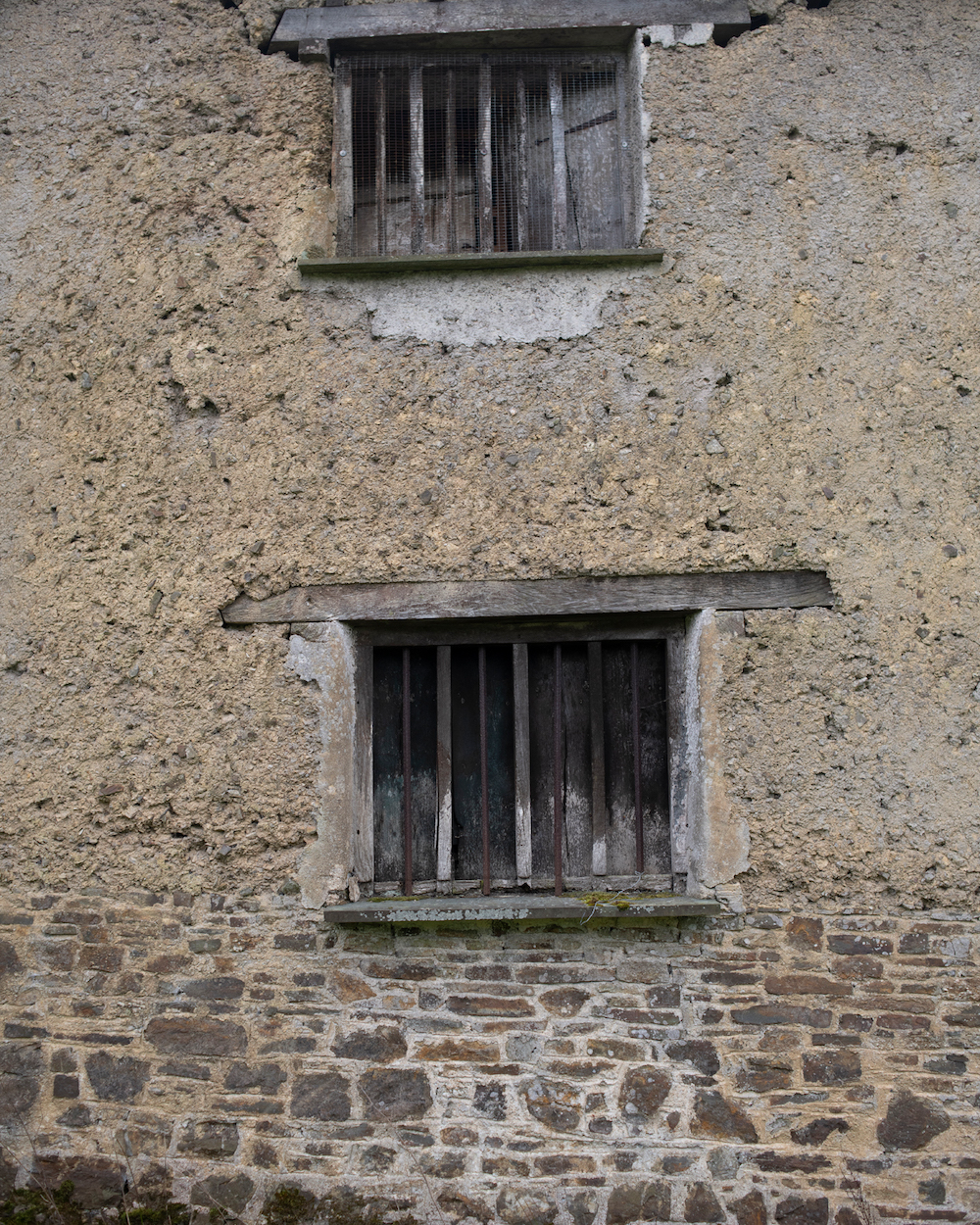 Exterior of the barn walls.
Exterior of the barn walls.
 The old wooden press, and hopper above
The old wooden press, and hopper above
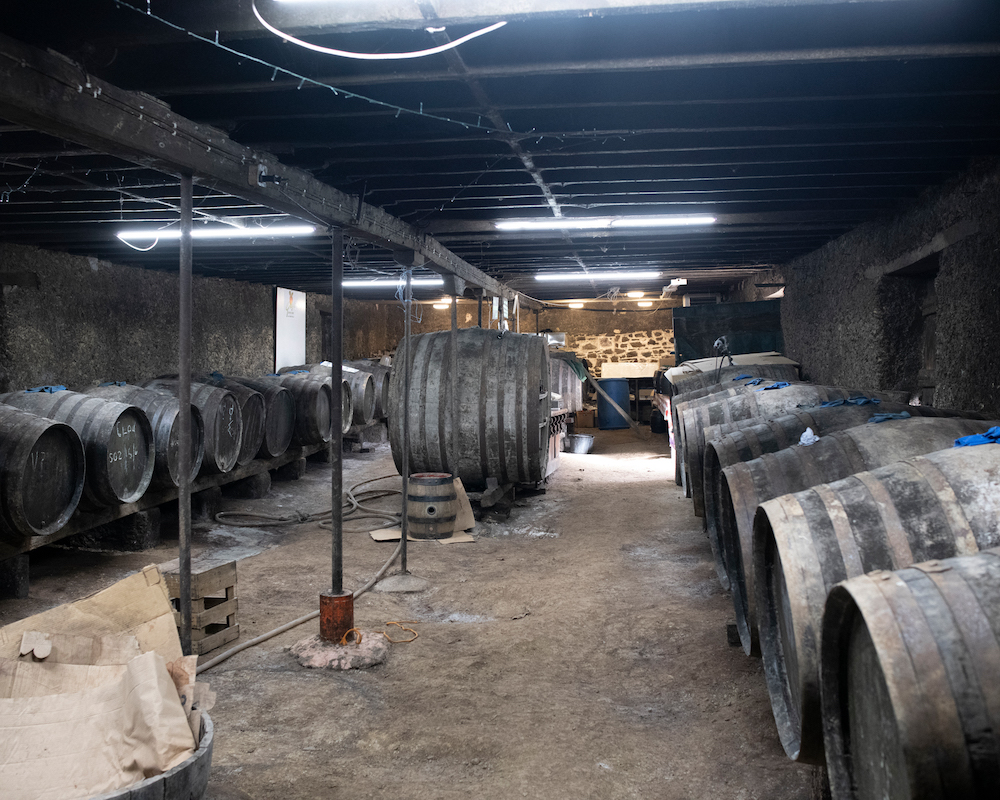 Interior of the cider barn
Interior of the cider barn
